day dreamer you are
solo exhibition (Saskia Fernando Gallery, 2021)








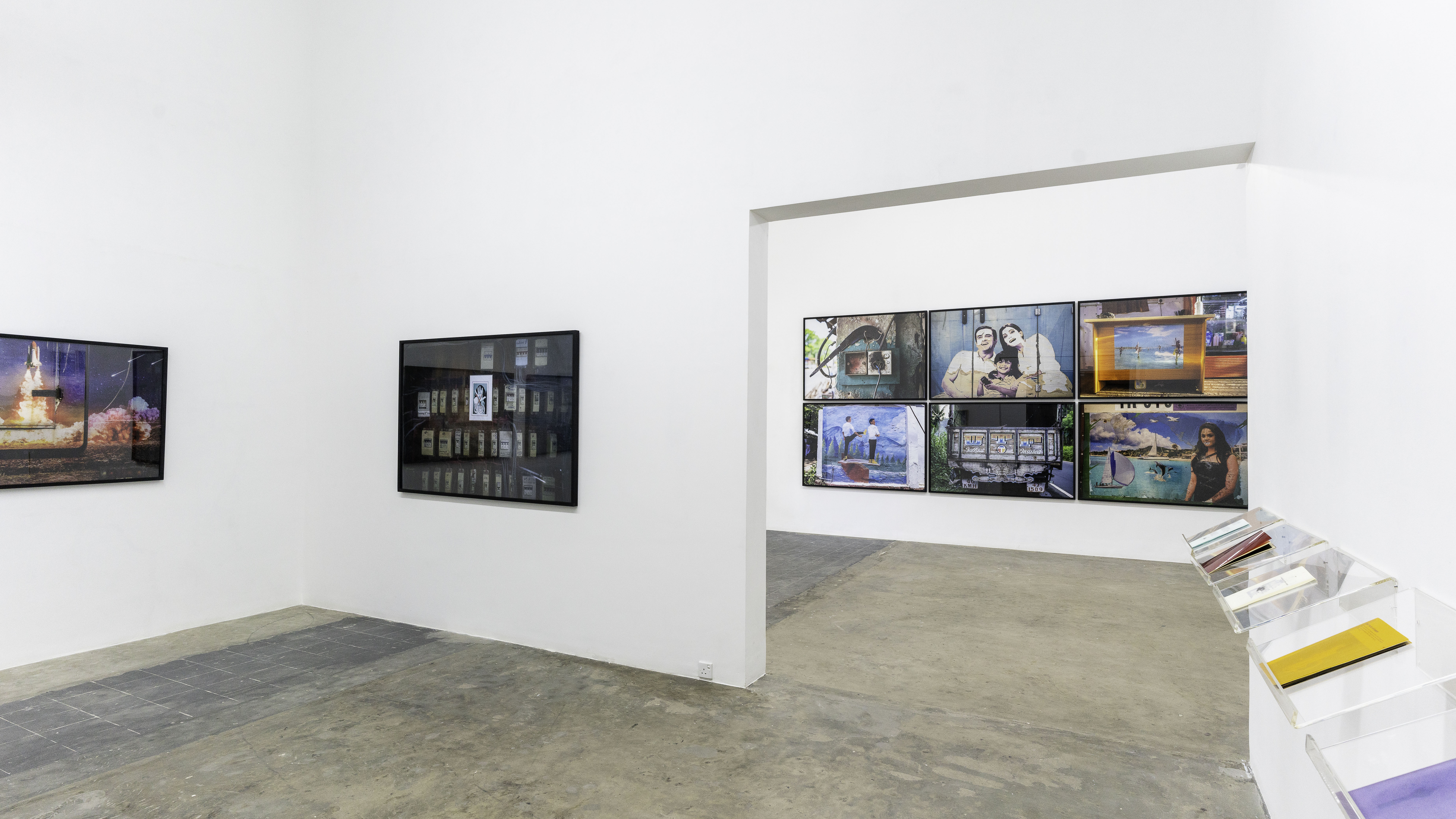





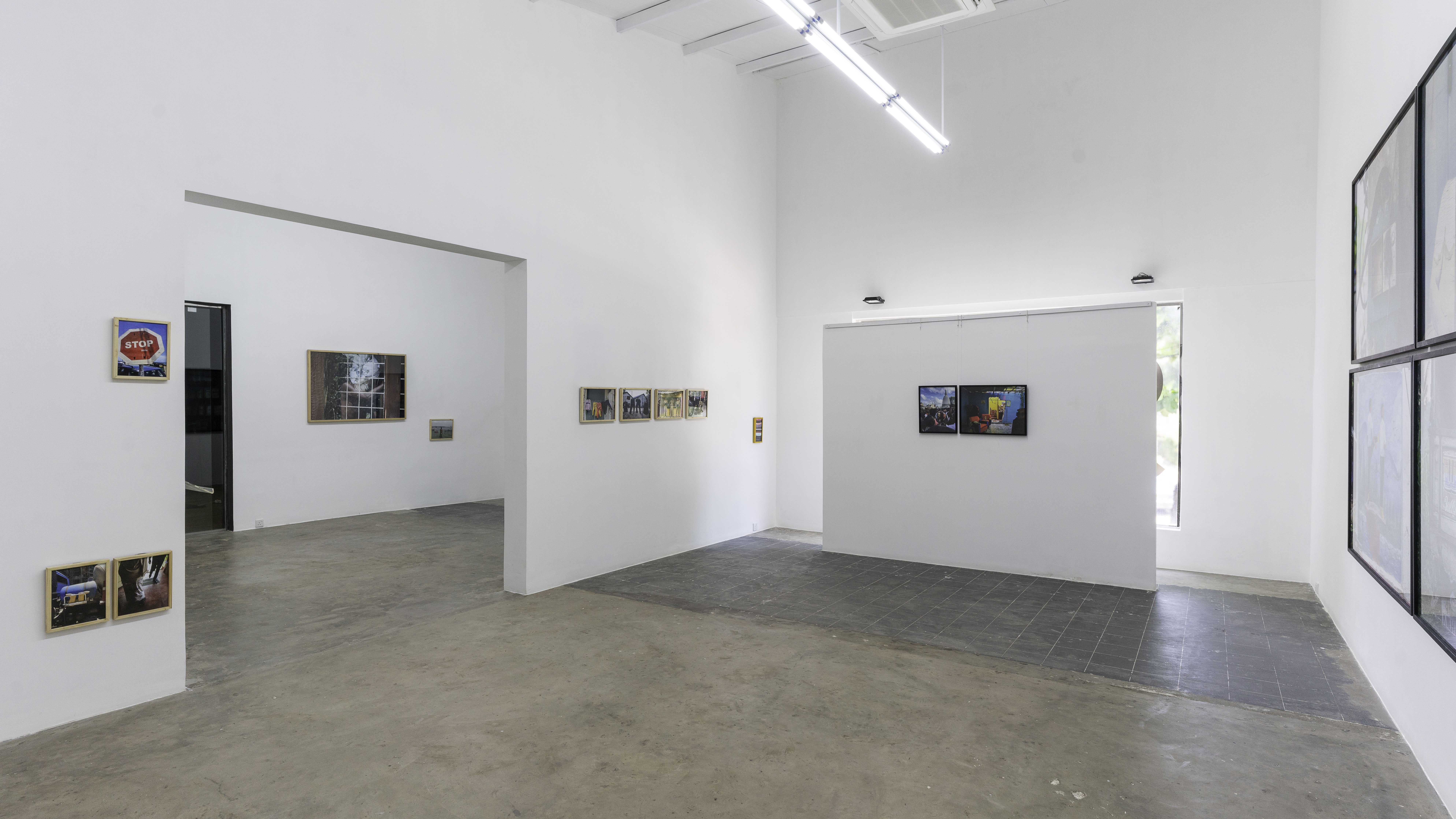

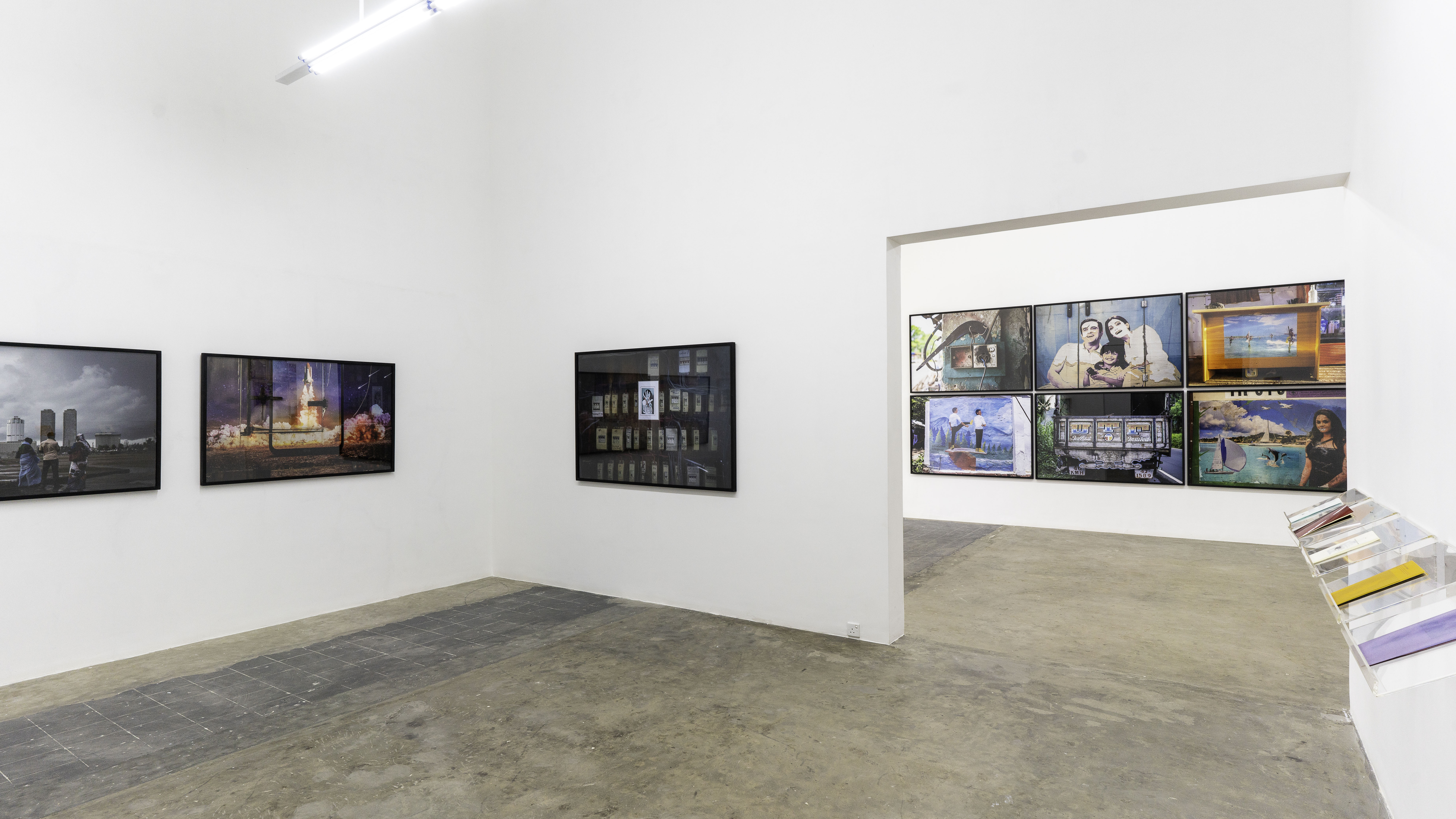





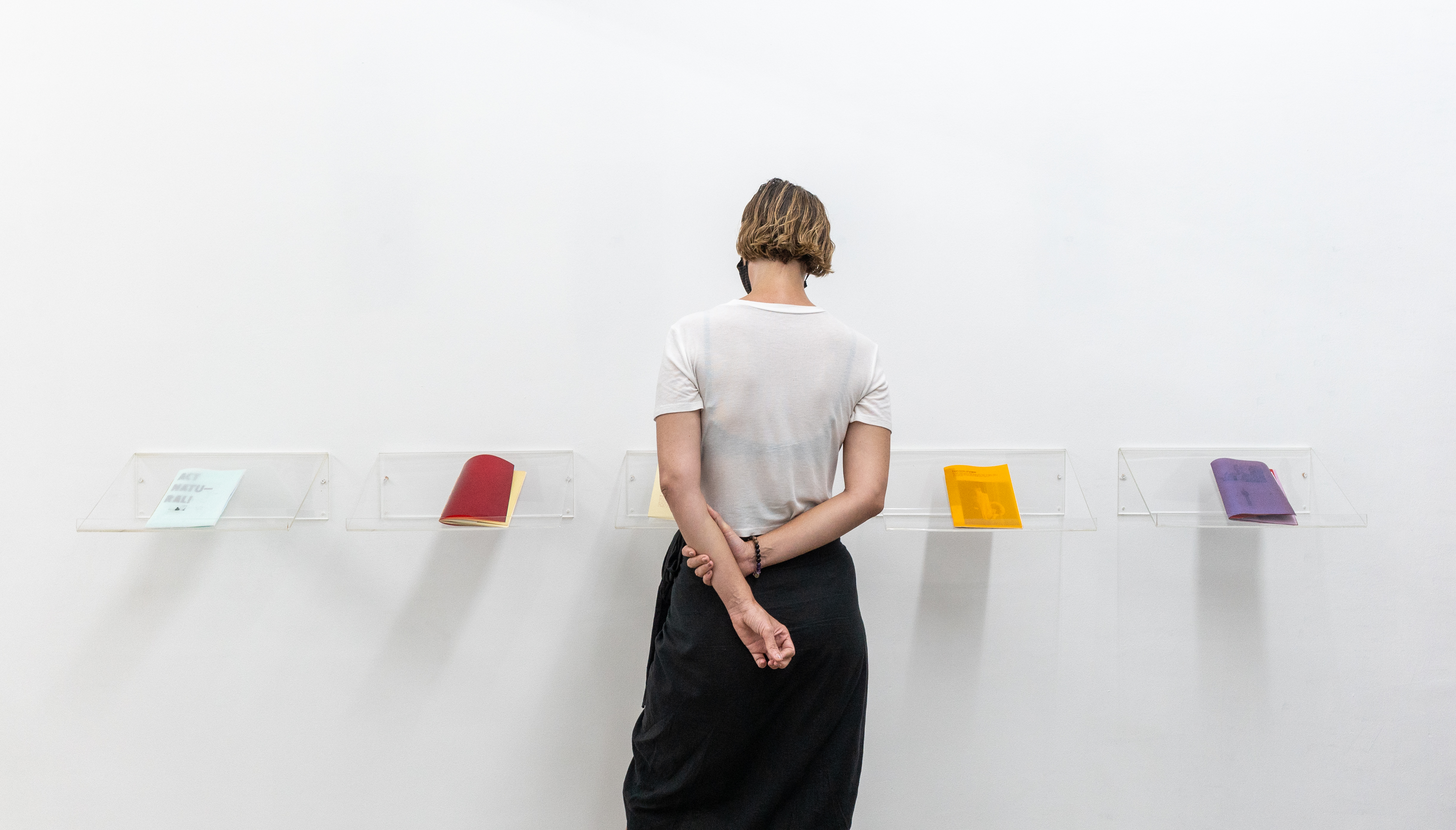
Daydreaming the City
Foreword by Vindhya Buthpitiya
Abdul-Halik Azeez’s Day Dreamer You Are is the parsing of a staccato urban told in glass, cement and fabric detritus, but also in skin, sky and water. Here, Azeez shuns the monumental that has come to symbolise the designer megapolises of the future envisioned by the false prophecies of states. Instead, he pieces together the fleeting, contrasting textures that make up the uneasy humdrum of an unnamed city as a montage of competing cruelties and aspirations. This city is one of quiet decay and devastation repeatedly confronting, and occasionally resisting the synthetic suggestions of material possibility - of what might be, of what will be, and the costs commanded to make it so.
Azeez grapples with these frictions expressed in the little wars between tangible surfaces and the fantasies papered over them - each embedded with shining promises or abrasive failings. The smooth metal of a scimitar is wedged against rutted concrete and exposed copper wire. The dirt-caked pink plush of an abandoned child’s toy rests against splintered rotting wood, rusting iron bars and frail dead brown leaves. A thorny barbed-wire fence is turned into a makeshift clothesline for threadbare polyester uniforms. Hand-painted men are unwittingly jostled out by their flex-printed successors. These layered textures of grit, grime and gloss evoke not only the accruals of time, weather and decomposition, but hint at the transforming technologies of city-making as the artisanal gives way to a plastic patina of progress.
As domestic dreams are gutted to pave way for new, state-sanctioned skylines, we are met with the frozen laughter of imitation happy families and glassy-eyed mannequins disfigured by small acts of vandalism. As mundane violences and the weight of aspiration spitefully bear down on the bodies of the city’s occupants, we are offered glimpses into tantalising escapes through vivid, make-believe portals. Dreamgirls and dreamboats idling in shallow blue waters are pasted over stippled walls making up transient shrines to impossible futures. Faceless fishermen meditate on stilts built over a calm and empty ocean. New clothes entice with the chance of new-and-improved selves. Wel Fit. Great. Work It. Artificial flowers spell out declarations of everlasting love. Gleaming PVC fruit and cake devoured by gleaming PVC models guarantee satisfaction. A rocket ship sets off to space in a soundless explosion of fire and exhaust.
Azeez grapples with these frictions expressed in the little wars between tangible surfaces and the fantasies papered over them - each embedded with shining promises or abrasive failings. The smooth metal of a scimitar is wedged against rutted concrete and exposed copper wire. The dirt-caked pink plush of an abandoned child’s toy rests against splintered rotting wood, rusting iron bars and frail dead brown leaves. A thorny barbed-wire fence is turned into a makeshift clothesline for threadbare polyester uniforms. Hand-painted men are unwittingly jostled out by their flex-printed successors. These layered textures of grit, grime and gloss evoke not only the accruals of time, weather and decomposition, but hint at the transforming technologies of city-making as the artisanal gives way to a plastic patina of progress.
As domestic dreams are gutted to pave way for new, state-sanctioned skylines, we are met with the frozen laughter of imitation happy families and glassy-eyed mannequins disfigured by small acts of vandalism. As mundane violences and the weight of aspiration spitefully bear down on the bodies of the city’s occupants, we are offered glimpses into tantalising escapes through vivid, make-believe portals. Dreamgirls and dreamboats idling in shallow blue waters are pasted over stippled walls making up transient shrines to impossible futures. Faceless fishermen meditate on stilts built over a calm and empty ocean. New clothes entice with the chance of new-and-improved selves. Wel Fit. Great. Work It. Artificial flowers spell out declarations of everlasting love. Gleaming PVC fruit and cake devoured by gleaming PVC models guarantee satisfaction. A rocket ship sets off to space in a soundless explosion of fire and exhaust.
The sightlines of the anxious living caught in these frames never intersect, and so we become entangled in their alienation at the city’s unkind and fluid margins. A little girl on a pony looks towards the sky. A man momentarily detached from his company watches out of a cafe window. Two women and a man dwarfed by concrete refuse to face us, as does the man standing amidst a group of crouching bathers as he stares out at the horizon. Mismatched visual axes are cast over a looming, transmuting, illusory urban pinned down by the itinerant photographer. It is only the flesh and bone panopticon of the state and those who are pictured within pictures that smile back.
We are reminded, however, of the fragility of such lofty (day)dreamscapes by the conduits of cable and tape that weakly hold these haphazard, wishful prosperities together. We are reminded also of Azeez’s hand, revealed to us in his shadowy presence in a foxed mirror, in soldering these fragments into a tactile map and narrative of who and what is trapped between dereliction and development. Our window onto the frontlines of progress through the photographer’s lens is, after all, permitted by this very violence. Along with Azeez, we are trespassers inside homes vivisected with little warning by the steel blades of government crawlers. We are impertinent observers of bodies pressed by protest and hard labour, intruding on both their work and respite. We, the voyeurs, benefactors and beneficiaries of the megapolis-in-the-making, are presented with a stereoscopic view of our city’s dirty laundry. Together we distort and daydream the city into being.
Vindhya Buthpitiya is a research fellow in Anthropology at University College London working at the intersection of conflict and visual culture. Her current research is focused on war, popular photography, and civilian resistance in northern Sri Lanka.
We are reminded, however, of the fragility of such lofty (day)dreamscapes by the conduits of cable and tape that weakly hold these haphazard, wishful prosperities together. We are reminded also of Azeez’s hand, revealed to us in his shadowy presence in a foxed mirror, in soldering these fragments into a tactile map and narrative of who and what is trapped between dereliction and development. Our window onto the frontlines of progress through the photographer’s lens is, after all, permitted by this very violence. Along with Azeez, we are trespassers inside homes vivisected with little warning by the steel blades of government crawlers. We are impertinent observers of bodies pressed by protest and hard labour, intruding on both their work and respite. We, the voyeurs, benefactors and beneficiaries of the megapolis-in-the-making, are presented with a stereoscopic view of our city’s dirty laundry. Together we distort and daydream the city into being.
Vindhya Buthpitiya is a research fellow in Anthropology at University College London working at the intersection of conflict and visual culture. Her current research is focused on war, popular photography, and civilian resistance in northern Sri Lanka.












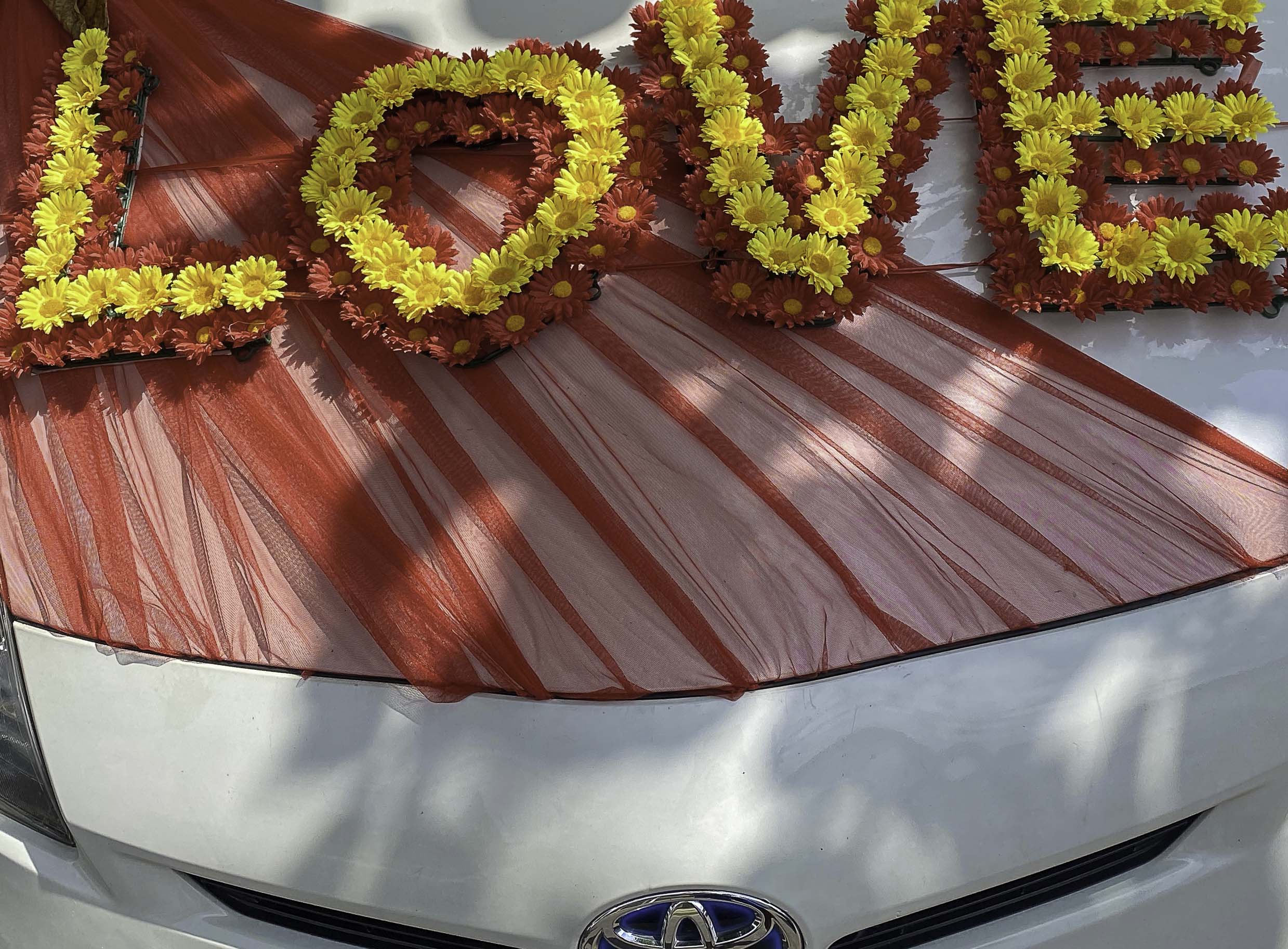






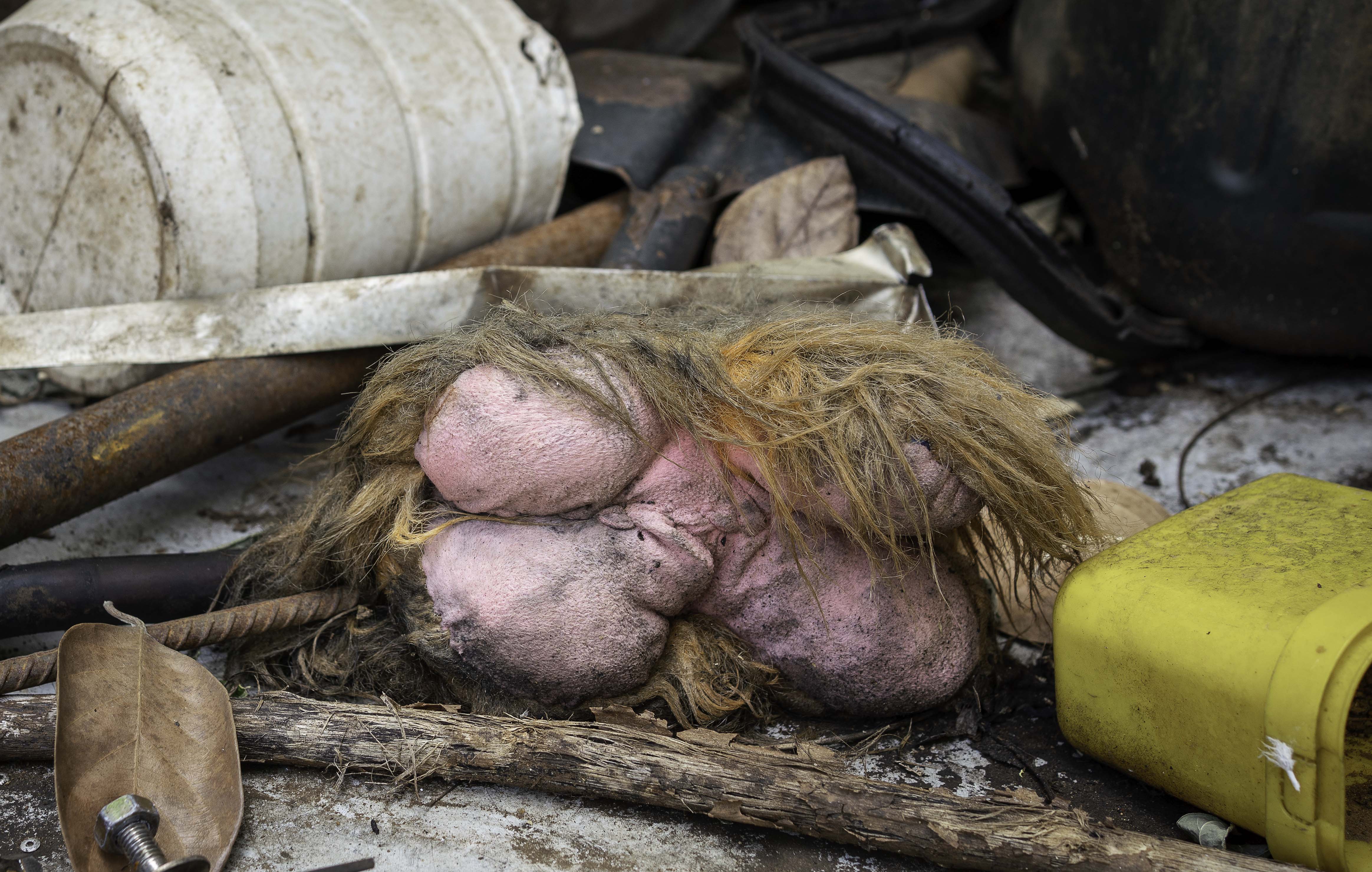























(Above) slideshow of photogrpahs from the show
Circumambulation (single channel video, duration 28:53)
Installation view (left), screengrab (below)


Extraordinary Gazette: World Class City Act (2020) edition of 100, made availble via this application form.